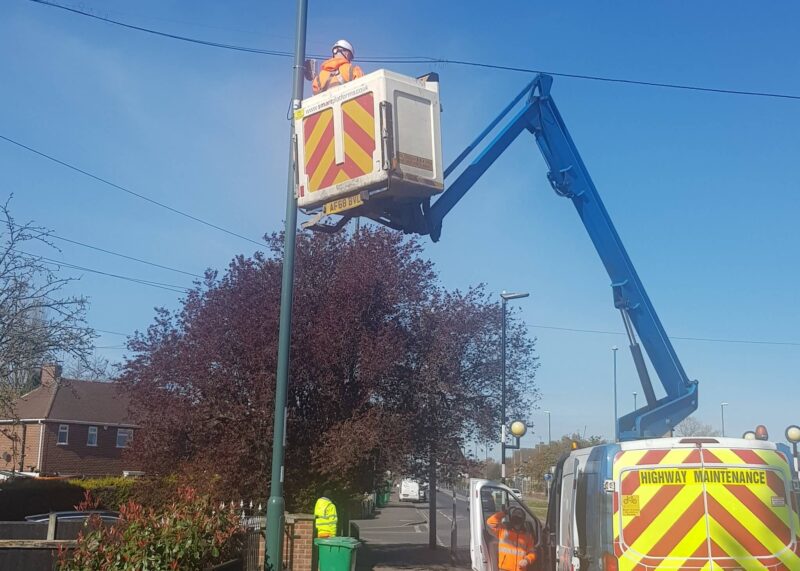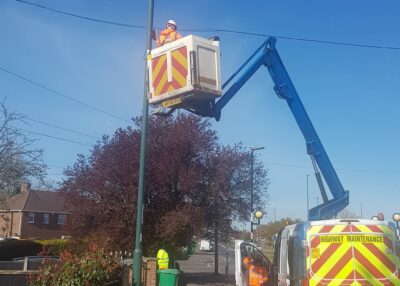
Nottingham City Council has partnered with VivaCity, the transport technology company, to help reduce congestion and emissions across the city. Across Nottingham, VivaCity is installing over 200 sensors with a mix of Automatic Number Plate Recognition (ANPR), traffic monitoring and Smart Signal Control system capabilities.
These sensors use their Artificial Intelligence (AI) capability to gather accurate, detailed and anonymous data 24/7 on transport modes, traffic flow and travel times, supporting strategic decisions to help enhance the transport network and improve urban infrastructure. The new technology can identify each individual vehicle type, from heavy goods vehicles and coaches to bicycles and pedestrians. As the data is received in real-time, i.e. as it occurs, this will increase the capacity to make rapid decisions to keep traffic moving freely around Nottingham.
The City’s first Smart Junction, which will be on the Ring Road at its junction with Aspley Lane, will use VivaCity sensors to help make the traffic lights more reactive to current traffic levels and help reduce waiting times. If it is successful, then it is intended that more Smart Junctions will be installed across the network. The technology will be upgraded as new functions are developed over the coming years. For example, the AI capability is currently being further developed to identify many more vehicle types such as taxis, minibuses, mobility scooters etc.
Frequently asked questions:
Will these sensors be able to identify me personally?
All data is anonymous and people are not identifiable. VivaCity and Nottingham City Council take the protection of data seriously. These sensors have been developed using privacy-by-design principles to ensure that personal data is never compromised.
How will these sensors benefit me?
As the data provided by the sensors is in real-time, this will help keep Nottingham Moving as it will enable the network managers to react to changes in the traffic quickly and efficiently helping to avoid congestion building up on our roads.
In the longer term these sensors will enable us to understand the city’s road network in a level of detail that has not been possible before. Future local transport plans will draw on these datasets to help make future changes to the road network. Residents, whether motorists or public transport users, should benefit from quicker and easier journeys which would also benefit the local economy.
How are these sensors being funded?
In March 2019 the Government announced the Future Transport Zones (FTZ) Fund. The fund objectives are to trial new and innovative mobility services, improve the integration of services and increase the availability of real-time data.
In March 2020 the Department for Transport (DfT) confirmed that the Nottingham-Derby bid was successful in securing £16.7 million funding over the next four years.
Due to impacts of the Covid-19 pandemic the FTZ programme launch was paused by Government and restarted on 1 June 2020. The programme runs until 30 June 2024.
What are the key dates?
The sensors will be delivered in four parts with the first sensors to be installed in February 2023 and the final sensors in November 2023.
Will I be able to see the data from the sensors?
The data will be fed into a new Data Hub to sit with other traffic datasets, such as car park occupancy and Electric Vehicle Charging Point locations and availability, which will be available to the public via open data.
How will these sensors help Nottingham to become carbon neutral?
Air quality monitors will be installed near VivaCity sensors on busy roads to see if there is a correlation between high levels of air pollution and road usage. If so, solutions can then be devised to reduce pollution in these areas and help towards Nottingham’s target of being carbon neutral by 2028.
Are these sensors the same as speed cameras?
No, these sensors are not the same as speed cameras. The sensors are not there to detect speeding or enforce traffic violations.
Where are the sensors going to be located?
The list of exact locations cannot be provided until we do a joint site investigation with VivaCity. Once lamp columns are identified, these are then sent to Enerveo to see if the lamp column is suitable to host a VivaCity sensor. Sometimes the column is not suitable so an alternative column has to be found.
The sensors will give us comprehensive coverage of all the main routes.
